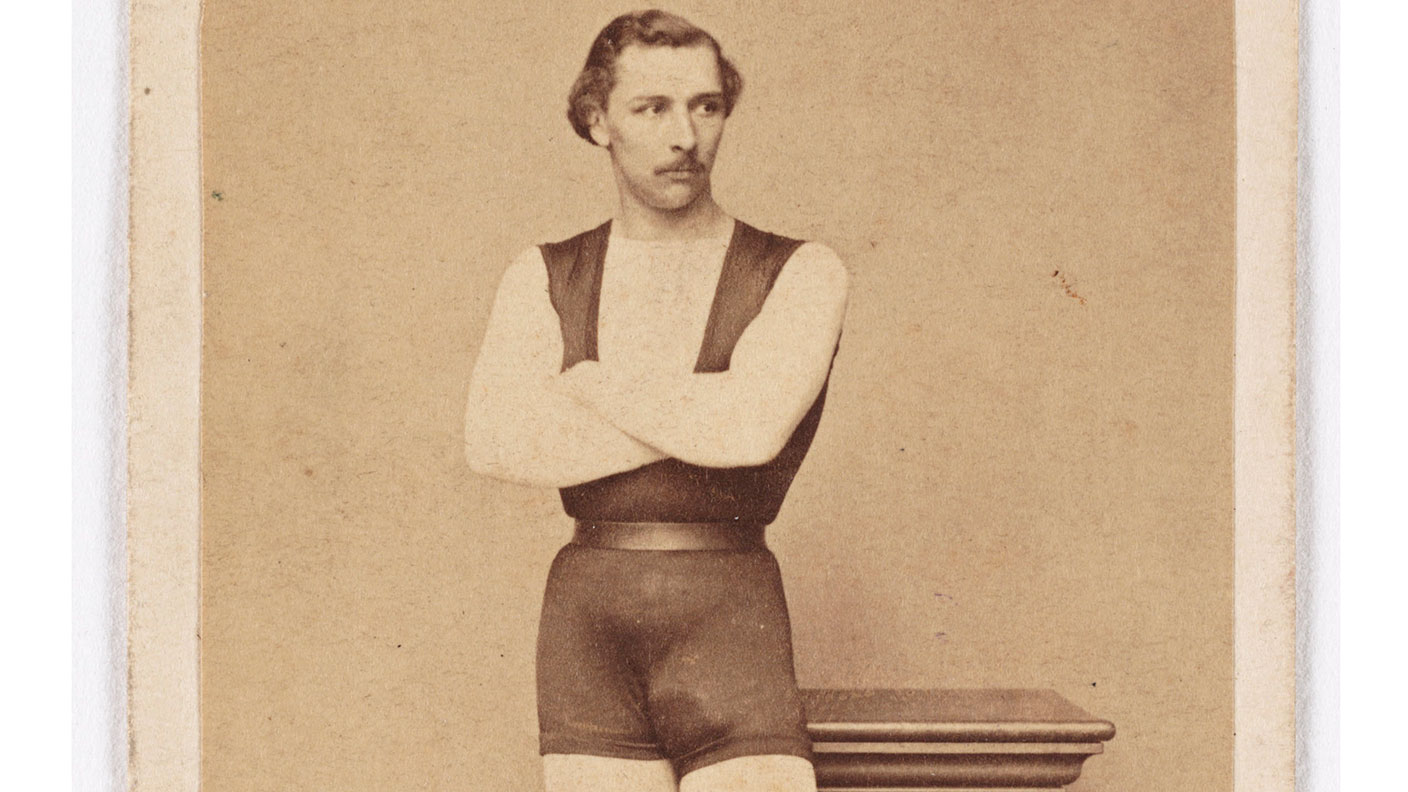12 November 1859: Jules Leotard's flying trapeze
On this day in 1859, Jules Leotard performed the world’s first ever flying trapeze act, wowing audiences in the Cirque Napoleon in Paris.

Jules Leotard was born in Toulouse, where his father was a gymnastics teacher who also ran a swimming pool. The young Leotard practised in his father's gym, and became expert on the parallel bars. Soon, he began to experiment with a trapeze hung over the pool.
At the age of 18, despite studying to become a lawyer, he decided to join Victor Franconi's Cirque Napoleon in Paris. And it was here in 1859 that he introduced the world to his flying trapeze act. In the course of his 12-minute routine, he became the first person to perform a mid-air somersault, and the first to leap from one trapeze to another.
He brought his act to London in 1861, and he was a smash hit in music halls and pleasure gardens. He was reputed to be paid £180 a week – the equivalent of £5,000 in today's money.
MoneyWeek
Subscribe to MoneyWeek today and get your first six magazine issues absolutely FREE

Sign up to Money Morning
Don't miss the latest investment and personal finances news, market analysis, plus money-saving tips with our free twice-daily newsletter
Don't miss the latest investment and personal finances news, market analysis, plus money-saving tips with our free twice-daily newsletter
Now, however, he is perhaps more remembered for the item of clothing he invented than for his mid-air feats of derring-do. His maillot – now of course, known as the leotard – not only allowed him free movement, with no chance of getting entangled in the trapeze, but it showed his... physique... to good effect.
This made him something of a hit with the ladies. And his charms were commemorated in the 1867 song The Daring Young Man on the Flying Trapeze (written by George Leybourne and Gaston Lyle), which tells of how a young maiden eloped with a trapeze artist, devastating her paramour.
But Leotard's sparkling career was cut short early. He died in 1870, in Spain, aged 28. Not, perhaps surprisingly, from crashing to the ground, but of smallpox, (or perhaps cholera, nobody is quite sure).
Get the latest financial news, insights and expert analysis from our award-winning MoneyWeek team, to help you understand what really matters when it comes to your finances.
Ben studied modern languages at London University's Queen Mary College. After dabbling unhappily in local government finance for a while, he went to work for The Scotsman newspaper in Edinburgh. The launch of the paper's website, scotsman.com, in the early years of the dotcom craze, saw Ben move online to manage the Business and Motors channels before becoming deputy editor with responsibility for all aspects of online production for The Scotsman, Scotland on Sunday and the Edinburgh Evening News websites, along with the papers' Edinburgh Festivals website.
Ben joined MoneyWeek as website editor in 2008, just as the Great Financial Crisis was brewing. He has written extensively for the website and magazine, with a particular emphasis on alternative finance and fintech, including blockchain and bitcoin.
As an early adopter of bitcoin, Ben bought when the price was under $200, but went on to spend it all on foolish fripperies.
-
 How much would it cost you to buy a house in Great Britain's happiest places?
How much would it cost you to buy a house in Great Britain's happiest places?Average asking prices for a property in the happiest place in Britain are below the national average
-
 How the Budget will hurt you: MoneyWeek Talks
How the Budget will hurt you: MoneyWeek TalksPodcast An Autumn budget podcast special episode, featuring MoneyWeek editors Kalpana Fitzpatrick, Andrew van Sickle and Cris Heaton.
-
 31 August 1957: the Federation of Malaya declares independence from the UK
31 August 1957: the Federation of Malaya declares independence from the UKFeatures On this day in 1957, after ten years of preparation, the Federation of Malaya became an independent nation.
-
 13 April 1960: the first satellite navigation system is launched
13 April 1960: the first satellite navigation system is launchedFeatures On this day in 1960, Nasa sent the Transit 1B satellite into orbit to provide positioning for the US Navy’s fleet of Polaris ballistic missile submarines.
-
 9 April 1838: National Gallery opens in Trafalgar Square
9 April 1838: National Gallery opens in Trafalgar SquareFeatures On this day in 1838, William Wilkins’ new National Gallery building in Trafalgar Square opened to the public.
-
3 March 1962: British Antarctic Territory is created
Features On this day in 1962, Britain formed the British Antarctic Territory administered from the Falkland Islands.
-
10 March 2000: the dotcom bubble peaks
Features Tech mania fanned by the dawning of the internet age inflated the dotcom bubble to maximum extent, on this day in 2000.
-
9 March 1776: Adam Smith publishes 'The Wealth of Nations'
Features On this day in 1776, Adam Smith, the “father of modern economics”, published his hugely influential book The Wealth of Nations.
-
 8 March 1817: the New York Stock Exchange is formed
8 March 1817: the New York Stock Exchange is formedFeatures On this day in 1817, a group of brokers moved out of a New York coffee house to form what would become the biggest stock exchange in the world.
-
7 March 1969: Queen Elizabeth II officially opens the Victoria Line
Features On this day in 1969, Queen Elizabeth II took only her second trip on the tube to officially open the underground’s newest line – the Victoria Line.

